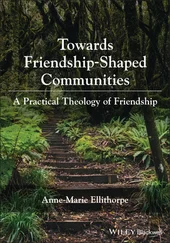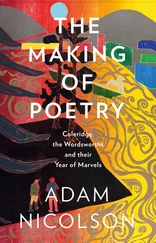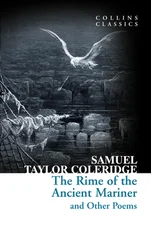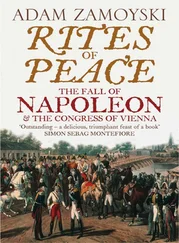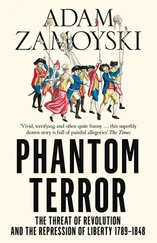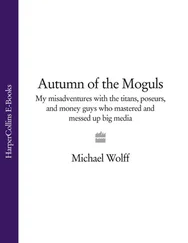ADAM SISMAN
Wordsworth and Coleridge: The Friendship
To George Misiewicz
COVER
TITLE PAGE
DEDICATION
ILLUSTRATIONS
MAPS
INTRODUCTION
PROLOGUE
PART I: Strangers
1. Revolution
2. Reaction
3. Idealism
4. Sedition
PART II: Friends
5. Contact
6. Retreat
7. Communion
8. Collaboration
9. Separation
10. Amalgamation
PART III: Acquaintances
11. Subordination
12. Estrangement
P.S. IDEAS, INTERVIEWS & FEATURES …
ABOUT THE AUTHOR
Q&A: ADAM SISMAN TALKS TO SARAH O’REILLY
LIFE AT A GLANCE
TOP TEN FAVOURITE BOOKS
A WRITING LIFE
ABOUT THE BOOK
FRIENDSHIP NEGLECTED BY ADAM SISMAN
READ ON
HAVE YOU READ?
FIND OUT MORE
APPENDIX: Coleridge’s Plan for The Recluse
PLATES
INDEX
ACKNOWLEDGEMENTS
ABOUT THE AUTHOR
NOTES
PRAISE
ALSO BY THE AUTHOR
COPYRIGHT
ABOUT THE PUBLISHER
The street in Bristol where the Pantisocrats lived for most of 1795. Line drawing by Edmund New.
Racedown Lodge in Dorset, occupied by Wordsworth and his sister Dorothy from 1795 to 1797. Line drawing by Edmund New.
The Nether Stowey cottage, home of the Coleridge family from the end of 1796 until the middle of 1799. Line drawing by Edmund New, 1914.
Alfoxden Park, rented by William and Dorothy Wordsworth in 1797–98. Line drawing by Edmund New, 1914.
Wordsworth at the age of twenty-eight, by William Shuter. (Courtesy of the Division of Rare and Manuscript Collections, Cornell University Library)
Wordsworth aged thirty-six. Drawing by Henry Edridge. (Dove Cottage, The Wordsworth Trust)
Coleridge in 1798, by an unknown German artist. (Mrs Gardner)
Coleridge early in 1804, by James Northcote. (Dove Cottage, The Wordsworth Trust)
Silhouettes of Dorothy Wordsworth in 1806, and of Sara Hutchinson and Mary Wordsworth in 1827. (Dove Cottage, The Wordsworth Trust)
Miniatures of Sara Coleridge in 1809 (Getty Images) and of Annette Vallon, date unknown. (Dove Cottage, The Wordsworth Trust)
Hartley Coleridge, aged ten. (Frontispiece to Vol 1 of Hartley Coleridge’s Poems, 1851)
The Great Track over the top of the Quantocks, photographed in the 1930s. (Kit Houghton)
‘Alfoxton Park’ by Miss Sweeting, from a book of views published in the 1830s.
Greta Hall, illustrated in 1887. Postcard from Souvenir of the English Lakes. (Jeronime Palmer and Scott Ligertwood of Greta Hall, Keswick)
Landscape surrounding Greta Hall. Engraving from W. Westall’s original drawing. (Dove Cottage, The Wordsworth Trust)
Portrait of Robert Southey by James Sharpies, probably painted in 1795. (Bristol Museums, Galleries & Archives)
Self-portrait by William Hazlitt, painted c.1802. (Maidstone Museum and Art Gallery, Kent/The Bridgeman Art Library)
Thomas Poole. (Frontispiece to Thomas Poole and his Friends by Mrs Henry Sandford, 1888)
Charles Lamb, after an original drawing by Robert Hancock, 1798. (From Reminiscences of Samuel Taylor Coleridge and Robert Southey by Joseph Cottle, 1847)
Joseph Cottle. (Dove Cottage, The Wordsworth Trust)
Leathes Water (Thirlmere), a mezzotint based on a pencil and wash drawing by John Constable made in 1806. (Dove Cottage, The Wordsworth Trust)
Grasmere in the early nineteenth century, by George Fennel Robson. (Dove Cottage, The Wordsworth Trust)
Ullswater. Engraving by Miller after Allom, c.1830. (Getty Images)
Three contemporary drawings by John Harden of Brathay Hall, not far from Grasmere. (Abbot Hall Art Gallery, Kendal/The Bridgeman Art Library)
Dove Cottage, photographed early in the twentieth century. (Getty Images)
Part-title portraits: Southey (page 1) and Wordsworth (page 121) after original drawings by Robert Hancock, 1796 and 1798 respectively. From Reminiscences of Samuel Taylor Coleridge and Robert Southey by Joseph Cottle (1847). Coleridge (page 327) by Peter Vandyke, 1795. courtesy of the National Portrait Gallery, London.
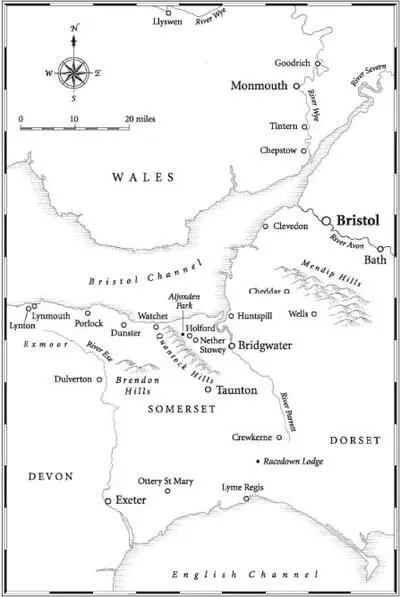
One June afternoon, more than two hundred years ago, a young man halted by a field-gate overlooking an isolated Dorset valley. His name was Samuel Taylor Coleridge, and he was twenty-four years old. He had walked forty miles since leaving his cottage in the Quantock Hills early the previous morning.
Beyond the gate, a cornfield stretched downhill towards the side of a substantial house, built in brick and partly covered by grey stucco render. In the kitchen garden two figures, a man and a woman, both about his own age, could be seen working; first one, then the other, paused and looked up towards where he stood.
The lane continued in a wide arc to the front of the house. Too impatient to take this long way round, Coleridge vaulted over the gate and bounded across the field towards the waiting figures, leaping through the corn. The two watchers, William Wordsworth and his sister Dorothy, retained a distinct memory of this sight almost half a century afterwards. 1
Until this moment, Wordsworth and Coleridge had met only a handful of times. Now Coleridge planned to stay several days with his new friend – but they soon found that this was not enough, and he repeatedly postponed his departure. The two had much to say to each other, and after more than three weeks neither wanted to part; so it was rapidly arranged that the Wordsworths would move to the Quantocks. There the poets lived in close proximity, meeting almost daily, composing and developing their work together. This was an intensely creative time for them both. Under the constant stimulus of the other, each man would write some of his finest poetry. Ideas, themes and images would pass back and forth between them, one poem prompting a response from the other in exhilarating succession. And though this miraculously fertile period lasted only sixteen months, it was the seed-time of fruit that would ripen through the subsequent decade. Two years later their association would be renewed in the Lakes, where there would be a brief reprise of their poetic duet.
If Coleridge’s arrival on that June afternoon in 1797 was not the beginning of their acquaintance, it was the beginning of their intimacy. Previously they had exchanged ideas, expressed mutual regard, and offered friendly criticism. Now the relationship became much closer, one of dialogue and collaboration, of sharing plans and dreams.
The names of Wordsworth and Coleridge have been linked ever since. They have passed into legend as a pair, like Boswell and Johnson, or Lennon and McCartney. The myth-making began while they were still living, and has continued uninterrupted. The image of these two young geniuses, the progenitors of English Romanticism, roaming the Quantock Hills in an ecstasy of shared understanding and creative fulfilment, is irresistibly romantic. Their subsequent estrangement, quarrel, and superficial reconciliation complete a story as poignant as any love affair.
A shared ambition dominated the friendship between the two men. Both believed ardently that poetry could occupy a central place in the culture of the age. The visionary Coleridge dreamed of a great poem – perhaps greater than any yet written. It would encompass all human knowledge, and take twenty years to write. It would ensure the poet a place among the immortals; more important, it would hasten in the ‘blessed day’ of Mankind’s redemption, ‘the day fairer than this’: beginning where Milton left off.
Читать дальше


